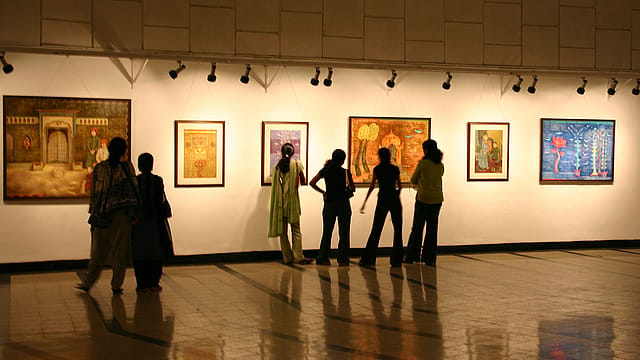Visual arts industry revenues fall in 2017
ADVERTISEMENT

The November 2016 demonetisation and the implementation of the Goods and Services Tax (GST) together took toll on the Rs 1,460 crore Indian visual art market in 2017. This estimated value was 6% lower compared to Rs 1,560 crore estimated for 2016. Yet, the market holds significant potential in the future, claims a new report.
The report by leading consulting firm KPMG and industry body Federation of Indian Chambers of Commerce and Industry (FICCI) says that if not for double blow of demonetisation and GST, growth was expected during the last year. “While demonetisation had an adverse impact on the sale of art galleries (which also deal in sales of affordable art), the implementation challenges around GST impacted the sales of auction houses, with many auction houses holding at least one less sale in the year,” it notes.
While the industry grew in the last four years, its share in the global art industry was a miniscule 0.5% in 2016. The global art industry registered total sales of $56.6 billion in 2016, a drop of 11% from $63.3 billion in 2015.
Further, the report suggests that high net worth individuals (HNWIs) and emergence of a new generation of art buyers including entrepreneurs, company executives and professionals, such as doctors and lawyers, will drive the market.
December 2025
The annual Fortune 500 India list, the definitive compendium of corporate performance, is out. This year, the cumulative revenue of the Fortune 500 India companies has breached $2 trillion for the first time. Plus, find out which are the Best B-schools in India.
“In addition to being bought for personal use, art has also emerged as a major source of investment, with the wealthy buying art for financial benefit,” the report says.
The report also says that digital platform has emerged as a new avenue for sales in the visual arts industry. In 2016, Mumbai-based Saffronart, founded by Minal and Dinesh Vazirani in 2000, had bidders from around the world, including Singapore, Bahrain, Bangladesh, Bhutan, Hong Kong and Switzerland for an online auction.
“Online art marketplaces are making the dated process of art discovery and buying much easier and quicker with a number of players embracing a digital-first approach to sell art,” the report notes, adding that the level of online sales is still fairly low.
The art market is also witnessing an increased interest from India Inc. Earlier, it was organizations paying art galleries for brand associations, but now there is a growing trend of corporates proactively engaging in art events.
In 2017, the real estate arm of Godrej group, Godrej Properties, launched the Godrej Public Art Initiative. The game plan is to partner with contemporary Indian and international artists and exhibit their work through this initiative.
Similarly, DLF, South Indian Bank, Lulu Group, BMW and Asian Paints made significant contributions to the bi-annual Kochi–Muziris Biennale in Kerala.
However, challenges linger. The biggest being the lack of conducive ecosystem in the country. “Artists in India are not allowed to work at home, as it falls under the ambit of commercial work. This is a major deterrent for budding artists as there are no government-run art avenues/spaces. Internationally, a number of governments offer spaces at highly subsidised rates, which is not the case in India,” says contemporary Indian artist Subodh Gupta in the report.
“The government does not allow public- run museums to tie-up with private organisations or individuals, and the latter have to depend on central funds for restoration and even to run day-to- day operations,” the report states.
Additionally, the lack of government support continues to be a deterrent to the industry. The report notes that the ministry of culture, the largest funder for art, does not spend 100% of its allocated budget each year. For instance, funds to the tune of Rs 783 crore remained unutilised.
KPMG and FICCI claim that the budget allocation for the ministry has also remained minuscule—Rs 2,500 crore out of Rs 7 lakh crore union budget outlay in FY2017, less than 1% of the overall budget. However, analysts have been critical of such stout allocations. “For an industry which is valued under Rs 1,500 crore, the government’s Rs 2,500 crore allocation should be called anything but modest,” says one.
And, forgery remains a significant problem to tackle. KPMG and FICCI peg the annual traded value of forged art in the range of Rs 80 – Rs 100 crore – on the higher side this translates to upwards of 6.8% of the value pegged for the market. And forgers have targeted works of modern artists like M. F. Husain, S. H. Raza and F. N. Souza among others, the report says.
